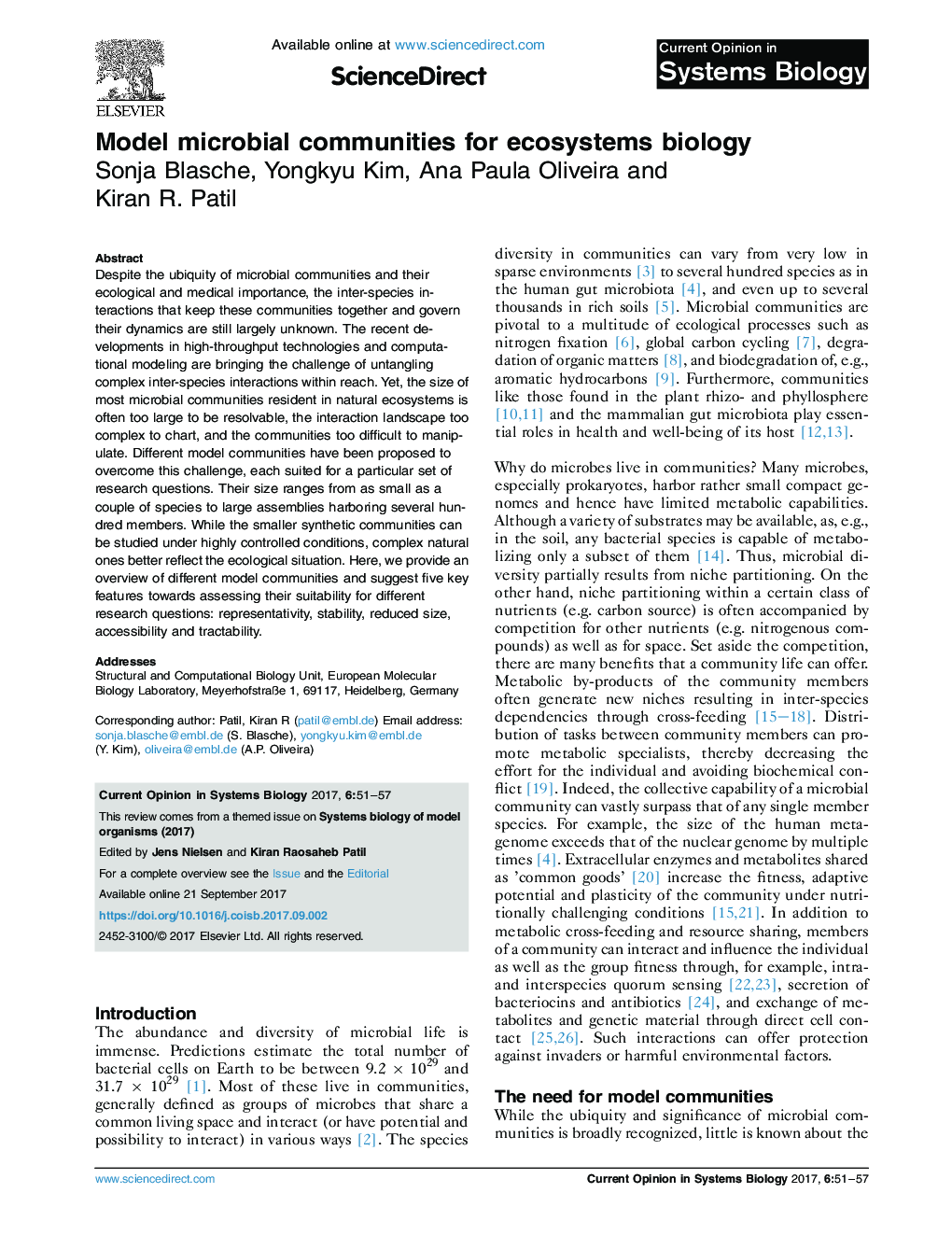| Article ID | Journal | Published Year | Pages | File Type |
|---|---|---|---|---|
| 8918086 | Current Opinion in Systems Biology | 2017 | 7 Pages |
Abstract
Despite the ubiquity of microbial communities and their ecological and medical importance, the inter-species interactions that keep these communities together and govern their dynamics are still largely unknown. The recent developments in high-throughput technologies and computational modeling are bringing the challenge of untangling complex inter-species interactions within reach. Yet, the size of most microbial communities resident in natural ecosystems is often too large to be resolvable, the interaction landscape too complex to chart, and the communities too difficult to manipulate. Different model communities have been proposed to overcome this challenge, each suited for a particular set of research questions. Their size ranges from as small as a couple of species to large assemblies harboring several hundred members. While the smaller synthetic communities can be studied under highly controlled conditions, complex natural ones better reflect the ecological situation. Here, we provide an overview of different model communities and suggest five key features towards assessing their suitability for different research questions: representativity, stability, reduced size, accessibility and tractability.
Related Topics
Physical Sciences and Engineering
Computer Science
Computer Science (General)
Authors
Sonja Blasche, Yongkyu Kim, Ana Paula Oliveira, Kiran R. Patil,
